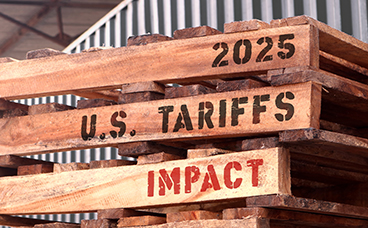Morgans Financial's Chief Economist and Director of Strategy, Michael Knox, discusses President Trump's introduction of reciprocal tariffs to address high foreign tariffs on U.S. goods. Learn how this policy aims to balance trade and reduce the U.S. budget deficit, impacting countries like China, the EU, Vietnam, and Australia. Read the transcription below:
"Back in November, we began discussing a policy document written by Peter Navarro, who had outlined what he expected the Trump administration to achieve if it were elected. One key part of this policy involved reciprocal trade, which aimed to address the issue of high tariffs charged by other countries on imports of U.S. goods. The idea was to create a structure for negotiating down these tariffs.
Navarro argued that many countries were imposing very high tariffs on U.S. imports, and the goal was to bring these rates into alignment with those that the U.S. imposes on goods from those countries. Fast forward several months. This week, President Trump issued an executive order that introduced these reciprocal tariffs. Essentially, the idea is that the U.S. will impose tariffs on other countries promted by the tariffs they charge on U.S. goods. For example, countries like Vietnam or China charge significantly higher tariffs on American goods than the U.S. charges on imports from these countries. The U.S. proposal is to raise its tariffs to match half the rates charged by these countries.
For instance, China currently imposes a 67% tariff on American goods, while the U.S. only charges about 2.5%. Under the new proposal, the U.S. would raise its tariffs on Chinese goods to 34%, which is half of the Chinese tariff. Similarly, the European Union charges about a 39% tariff on U.S. goods, and the U.S. now plans to charge 20% on imports from the EU. Vietnam, which imposes around a 90% tariff, would see U.S. tariffs rise to 46% . Taiwan, which has a tariff of 64%, would be subject to a 32% tariff.
Australia, however, fares better with only a 10% tariff on U.S. goods. Some have questioned why Australia faces this tariff despite not charging any tariffs on American imports. The reason, according to Navarro, is that Australia's Goods and Services Tax (GST) is 10%, which, while not a tariff, effectively raises the price of imported goods in the same way that tariffs do. Therefore, it is treated similarly to an import tariff.
Although this concept of reciprocal tariffs has been discussed since November, it came as a surprise to many countries when Trump made the announcement in the Rose Garden this week. For some nations, like Australia, the 10% tariff may be the best deal available. This is because the U.S. is aiming to reduce its budget deficit, which is currently running at about 6.8% of GDP. Part of this effort involves raising revenue through tariffs. The U.S. hopes to reduce its deficit to about 3% by cutting spending and increasing revenue.
Ultimately, the goal of these reciprocal tariffs is to create a bargaining process where other countries can negotiate lower tariffs. As the market adjusts to this idea, we expect the situation to stabilise. Over the coming weeks, there may be more clarity on how these tariffs will be applied and whether countries can reach agreements to reduce them to more reasonable levels. The market has already reacted dramatically to the news, but as this process unfolds, it’s likely that the global economy will adapt to the changes, and the financial system will settle down."











